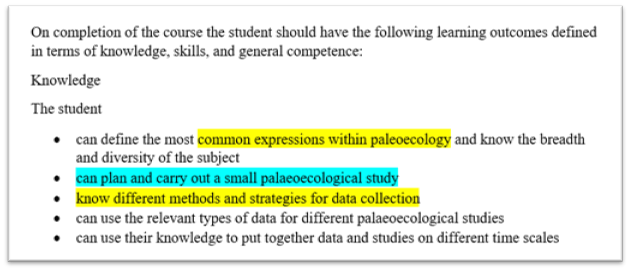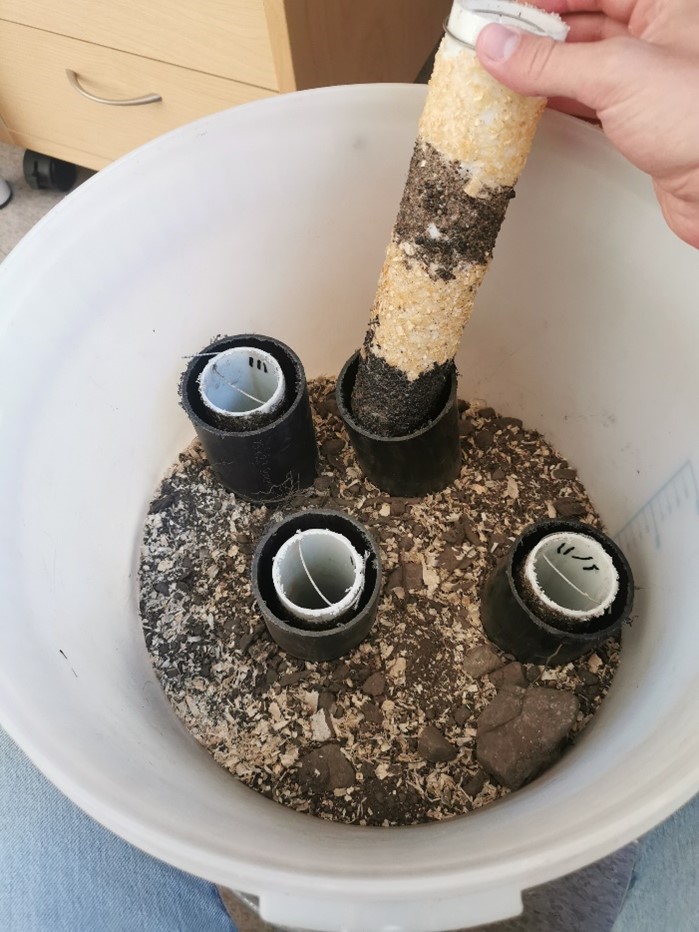Gamification in course teaching through escape-rooms
and escape-boxes
Background
The promise of gamification!
Games have the ability to engage, motivate and inspire through simply be built on elements of playfulness, fast-response and (sometimes) competition. (Deterding, S., et.al. 2011) Building on the idea of games as a pedagogical strategy (Skaug, J.H., et.al. 2020), we made a physical escape room and the game is played by students. Escape rooms are cooperative and interactive games that have really gained traction as a possible gamification tool for cooperative learning (Ross & Bannet, 2020; Watermeier, D. & Salzameda, B. 2019), and we used this both as a social “ice-breaker” for new students to the course, and to make them interact with certain key elements of the course. Our escape room was initiated by students to enhance student learning.
Goal & purpose
Set in a learning context, an escape room challenge (e.g., learning new types of technical skills or finding patterns to find solutions) can create opportunities for students to develop skills in a new environment. Based upon problem-solving, teamwork, critical thinking and connecting new-, old-, and shared knowledge, the students solve a set of riddles, puzzles, and tasks in various forms. The students will develop new skills by solving these challenges using information that they can find, hidden (literally or more “in plain sight”), in the escape-room environment. The participants are the drivers of the narrative, and are placed in the middle of it, trying to go forward in a fun, new and exciting way. For example, learning about acidity in chemistry, the students might need to mix acidic liquid in a jar filled with colored solution to make it colorless, and reveal a code that opens the lock to win (or more along). Another example is from an escape room we build in a paleoecology course, where students had to line count sediment rings from dirt samples (more detailed description and picture under “Tools”). Playing around and touch upon aspects of the curriculum like this might create “mental-hooks” for students, making it easier to remember later.
Using this escape room concept can be instructive both for the players (students), but also the “game-masters” (the teacher or the ones that made the game). To make puzzles and play around with the course syllabus in order to make creative, fun and original tasks require a surplus of facts and knowledge of the course but has a fun and playful undertone that might engage students to require this surplus in order to make fun puzzles for the next escape-room.
Innovative
Teaching
Teaching resources
Tutorials
Numerical competency
Web-based platform
Community
Our escape room was initiated by a student project, and with support from course teachers it was created to fit the course learning outcomes. It’s helpful to have a teacher(s) onboard on the project, so the learning outcomes and goals are clear. A person (e.g. someone from the administration) controlling the economic and equipment aspects is also good, but the main drivers could be students (as TAs, course participants etc.) or the course teacher if TAs and such are not available. But to let students be part of the creation could be a good exercise for them to be creative with the syllabus, and thus learn through that.
Tools
It is no “one way” of making an escape-room/box, it depends on the course, the resources, time, etc. So it is difficult to give clear instructions on how to go through with it, but here are some suggestions on how you could structure the working process.
-
- Start with the learning outcomes of the course: these should give you the “theme” to follow with when creating puzzles. For example, when we built an escape-room for a paleoecology course at UiB, the obvious theme was “paleoecology”, but the learning outcomes gave us quickly some focus points.
 It is not easy to make a puzzle where the students need to “plan and carry out a small palaeoecological study” (marked in blue), that’s a learning outcome that takes a long time and probably needs to be done in a more systematic way. But it is easier to make puzzles where they come across expressions or gets to know different methods in paleoecology (marked in yellow), so this is something we can work with.
It is not easy to make a puzzle where the students need to “plan and carry out a small palaeoecological study” (marked in blue), that’s a learning outcome that takes a long time and probably needs to be done in a more systematic way. But it is easier to make puzzles where they come across expressions or gets to know different methods in paleoecology (marked in yellow), so this is something we can work with. - Identify what type of puzzle you want to make, and work backwards: a common puzzle is the “open this lock”-type of puzzle. The participants need to find a number combination that goes into a lock; when opened, they can get another puzzle, a hint, part of the final solution or something similar. When you have found out what type of puzzle you want to make, e.g., a 4-digit lock, then “working backwards” means you know now that you need to hide a number combination somewhere to be found, so its just to be creative! For the paleoecology course, we wanted the students to look at different methods for data collections, and we wanted one puzzle to be to open a 4-digit lock. One method to collect data in paleoecology is to use a Russian peat borer and count sediment rings (thus collecting traces of e.g. pollen back in time). By creating models of these dirt sediments, we suddenly have something the students can count – and then put into the lock to open it and come closer to the end goal.

- Putting together the puzzle in a story: we want the students to have a common goal as a group; in an escape-room, this goal is natural “to escape”, but escape what? To make a story is not necessarily easy, but don’t put too much time into this, the story can be weird, or a bit stupid or unlikely, the important part is that you give the students a reason to solve the set of puzzles. In our paleoecology course, the story was that a “mad professor” had trapped them inside a lab, and they had 60 minutes to open a box where the “safe button” was hidden before all the oxygen in the room would go out. A bit over dramatic, and possibly stupid, but it worked!
- Start with the learning outcomes of the course: these should give you the “theme” to follow with when creating puzzles. For example, when we built an escape-room for a paleoecology course at UiB, the obvious theme was “paleoecology”, but the learning outcomes gave us quickly some focus points.
Other considerations
It is already mentioned further above, but I would highly recommend trying to make this a “all students driven” activity. I think you could learn a lot from both creating and playing the escape-room. The goal is not to make the students ready for the final exam or teaching them some long lasting techniques that are really important in the field. The goal is to create a fun team-work exercise where they ALSO gets to touch various topics from the course, and hopefully create some “mental hooks” (Vygotsky, 1962).
References
Deterding, Sebastian, Sicart, Miguel, Nacke, Lennart, O'Hara, Kenton, & Dixon, Dan. (2011). Gamification. using game-design elements in non-gaming contexts. CHI '11 Extended Abstracts on Human Factors in Computing Systems, 2425–2428. https://doi.org/10.1145/1979742.1979575
Ross, R., & Bennett, S., (2020). Increasing Engagement with Engineering Escape Rooms, in IEEE Transactions on Games, doi: 10.1109/TG.2020.3025003.
Skaug J. H., Husøy, A., Staaby, T., Nøsen, O. (2020). Spillpedagogikk – Dataspill I undervisning. Bergen: Fagbokforlaget.
Vygotsky LS (1962) Thought and Language. Massachusetts Institute of Technology, Cambridge MA
Watermeier, D., Salzameda, B. (2019). Escape Boredom in First Semester General Chemistry. Journal of Chemical Education 2019 96 (5), 961-964 DOI: 10.1021/acs.jchemed.8b00831
Poster
Click here to view the poster presented at UNIS Learning Forum in 2021
Contributors
- Ruben Schelbred Thormodsæter
